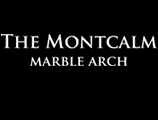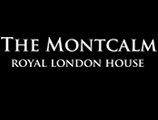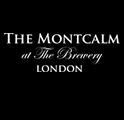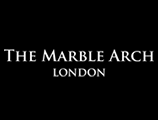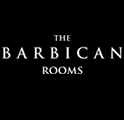The British Museum is one of the world’s foremost heritage centres, with a wealth of treasures from around the world which span generations of history.
With so much to see during your trip, we’ve compiled this brief list of ten top finds you can see right now at the museum – helping to give a little insight into what to expect on your own visit…
-
The Sutton Hoo Ship Burial Helmet
The finds from Sutton Hoo are all notable, but the item which attracts particular and enduring interest is the burial helmet which is believed to have belonged to a wealthy Anglo-Saxon in the 7th century. The owner was likely a monarch in East Anglia, which makes this object even more fascinating. At the time it was found (1939), the item had been crushed, and it was subsequently restored in 1947.
Other items found in this collection – considered amongst the most significant ever discovered in the UK – include coins, goldwork and jewellery.
-
The Portland Vase
Thought to have been made in Rome between AD5-25, this vase includes scenes likely carved with a gem cutter. It is also considered that the vase might have been a wedding present.
During the 18th century, Wedgwood created a copy of the vase, which to this day is considered to be a classic design piece. It was also this recreation which helped to make the original so famous. The original was smashed in the 19th century, but restored lovingly thanks to the Wedgwood copy. The item has been a fixture of the British Museum since 1945, having previously been loaned to the museum in 1810.
-
The Elgin Marbles
One of the most famous displays in the museum, and a must-see for guests at the Montcalm Hotel London City, the Elgin Marbles were once part of the Parthenon in Greece.
Their inclusion is considered a little controversial, as the government of Greece has repeatedly campaigned to retrieve them – however, the British Museum maintains it is the safest home for the items at present. They were first added to the museum after being acquired by Lord Elgin during the years 1801-1805.
-
The Vindolanda Tablets
Part of a Roman fort close to Hadrian’s Wall, these tablets were discovered during an archaeological project in the area. They contain letters created by Roman soldiers who were stationed nearby, including letters to their families, wives, and fellow officers in and around Britain.
Created using thin wooden sheets and ink, they paint a vivid picture of Roman life at the time, with everything from information on bills which need to be paid to letters discussing upcoming festivals and complaints about disciplinary action.
These tablets have recently been voted the most significant item in the British Museum, and provide the earliest known examples of handwriting anywhere in Britain.
-
Cat Mummies
The British Museum is noted for its fantastic and varied selection of mummies. Whilst only a small selection is on display for the public, this still accounts for a vast display which showcases the elaborate nature of the wrappings used, as well as shoes and clothing which each individual was buried wearing.
The cat mummies date from the later Egyptian era, likely the 1st century. Cats were associated with the gods, and these mummified cats were seemingly commonplace during the time period within designated cat cemeteries. During your stay at the Montcalm Hotel London City, be sure to take a look at the pieces on offer.

-
The Rosetta Stone
This remarkable artefact helped to unlock Egyptian hieroglyphics, with three separate languages on the tablet – allowing scholars to decipher the meaning of each translation. The stone was first uncovered in 1799, after French soldiers found it inside a fortress.
Acquired by British forces, it was part of the Treaty of Alexandria after Napoleon’s defeat. It has since been displayed in the British Museum, except for a period under lock and key during WW2.
While staying at luxury hotels for families, this would make a fantastic addition to any semi-educational trip for younger visitors.
-
Colossal Granite Head of Amenhotep III
Standing almost 10ft tall and with a weight of four tonnes, this item truly is ‘colossal’ in size and scope. It depicts Amenhotep III, who ruled as Egyptian pharaoh between 1390-1325 BC.
The piece underwent amendments during the reign of Ramses II, and was discovered around 1817 before being purchased by the British Museum from Henry Salt, a British archaeologist. Salt had discovered the piece in a Cairo warehouse – it is now on display for the public, and makes a big impression.
-
Lewis Chessmen
A selection of chess pieces crafted from whalebone and walrus ivory, these objects date from the 12th century. There have been numerous suggestions as to their original origin, including Norse, England and Scottish craftsmanship.
However, the true location is still unclear, though there is growing suspicion they originally hail from Norway. As the largest collection of leisure objects from the time period, they make a fitting addition to any visit to the British Museum.
-
Easter Island Statue
The statues of Easter Island are world-famous, and this addition can be found at the museum. Crafted from basalt, it is thought to have been carved in AD 1200, and its official name is Hoa Hakanania’a (translating to Stolen or Hidden Friend).
Acquired by Richard Ashmore Powell, a naval captain in 1869, the item was found in a ceremonial centre in Rapa Nui. It was later gifted to Queen Victoria, who passed it along to the British Museum.

-
Aztec Double-Headed Serpent
Crafted from wood and decorated with mosaics in turquoise, this piece is also covered with conch shell and oyster, creating an ornate and distinctive appearance.
Dating from the 15th or 16th century, it is a fine example of Aztec art, and was likely worn at ceremonies. The museum acquired the piece in 1894, and it has been on display ever since.


















